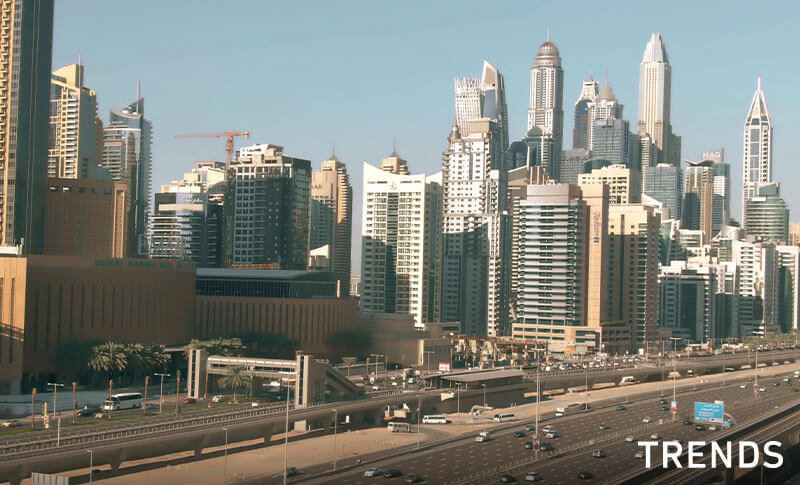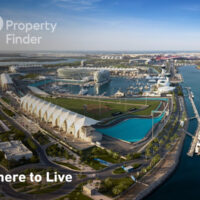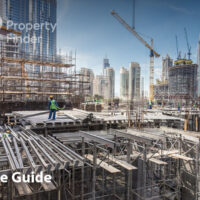
Building upwards is the answer to overpopulation and rapid urbanisation

ALI SAJWANI
General Manager – Operations, Damac Properties
Technology transformation is one of the critical challenges for the real estate industry, which has traditionally been slow to adopt innovation. With emerging trends in PropTech such as the use of AI, machine learning, blockchain and other technologies, it is becoming imperative for businesses to build robust transformation strategies and become digitally fit. What I love most about the sector is its ability to facilitate a country’s economic and social progress.
From Fritz Lang’s Metropolis (1927) to Ridley Scott’s Blade Runner (1981), modern science fiction has extensively used vertical cities to depict the future of urbanisation. While most of these films use the concept to highlight a grim dystopian future (to support the storyline, of course), owing to the reciprocal relationship between fiction and reality, they also inspire a rather promising solution to the ever-growing threat of rapid urbanisation.
Today, 55 percent of the world’s population lives in cities and this number is expected to reach 75 percent by 2050. This rapid explosion in urban population is exerting tremendous pressure on cities worldwide. More people equate to more homes, and more homes result in the human encroachment of land unless we adopt a conceptual shift in the way we approach urban planning.
As depicted in science fiction, expanding vertically could be a better way forward for urban expansion than spreading out. Still at a conceptual stage, vertical living entails building taller buildings that will eventually encompass all aspects of human life such as living, work, education, healthcare and leisure.
Today, 55 percent of the world’s population lives in cities and this number is expected to reach 75 percent by 2050. This rapid explosion in urban population is exerting tremendous pressure on cities worldwide.
While some discount the idea of vertical living as mere fiction, in fact, a growing number of architects, developers and urban planners see it as the most obvious way forward. To evaluate the case for vertical living, we need to consider the need, the advantages and challenges of the concept.
The Need
Cities, which were once nothing but defensive perimeters and warehouses for agricultural produce and goods, evolved through planning as they became centres for urban civilisation. Until around the 19th century, cities were mostly characterised by low-rise buildings spread across urban land. However, with the advent of technology and several economic factors, humans began to construct high-rises. Cities eventually became the centre of trade, politics and culture, which resulted in exponential growth of land value. Hence, building upward was the only way forward. However, even with the emergence of multi-storey buildings and skyscrapers, cities continue to expand horizontally, which has led to several problems.
Globally, we are running out of urban space. As we expand our cities, we encroach on forests, swamps, coasts and agricultural land, which leads to irreversible destruction of entire ecosystems. Horizontally planned cities lead to transport inefficiencies such as traffic congestion and environmental pollution resulting from the excessive use of vehicles to get to places. Cities that do not possess additional land to expand lose their potential for growth and economic development.
Contributing as much as 80 percent* of the global gross domestic product (GDP), cities and urban areas serve as economic powerhouses that draw people from all corners of the world. Cities across the globe are struggling to meet the infrastructural demands of their unrelenting growth.
With global population expected to hit 10 billion by 2050, it is becoming increasingly critical to isolate fact from fiction, factor in the advantages, iron out the quirks and consider a sustainable vertical evolution of urban living.
The Potential
Proponents of vertical urban development believe that building upwards is the answer to overpopulation and rapid urbanisation. Mixed-use, sky-high constructions can offer more space to live and work, without increasing the footprint on the land. In theory, future citizens could live, work and play within the same building, without having to spend time or resources to travel from one place to another. Besides providing a built environment for an ever-growing population, vertical cities will also enable urban planners to redevelop or remodel existing cities with ease.
By developing cities upwards, we can spare land for agricultural use, which will also need to be amped up considering the population explosion. By cutting down on vehicular transport, vertical cities can play a crucial role in reducing our energy consumption. By using predictive analysis, automation and integrated systems to improve energy consumption, use of resources, waste management and recycling, vertical living could significantly improve urban metabolism.
Considering the many advantages, it is easy to see how vertical living may seem like the most obvious answer to the impending challenges that cities across the world are beginning to face. However, there are significant challenges that are, in some cases, interconnected or in sharp contradiction to the advantages that vertical living offers.
The Downside
The concept of vertical living, while promising in many aspects, is loaded with challenges and dead-end questions that need to be answered. For instance, the cost of constructing mile-high skyscrapers increases as you build higher.
While vertical living promises to be an answer to preserving ecosystems in non-urban lands, the environmental impact of creating vertical cities could be severe, considering the exponentially higher energy and water consumption during the construction phase. Moreover, by affecting wind flow and sunlight, vertical cities may be detrimental to flora and fauna of neighbouring areas.
Those on the other side of the argument for vertical living also point out that vertical developments will restrict growth potential for future generations. Additionally, we also need to take into account the fact that vertical structures are built to last a finite number of years, after which they need to be abandoned. By increasing the density of urban population, vertical cities could amplify risks such as disease, crime, vulnerability to disasters and social conflict.
Many argue that the claustrophobia associated with vertical cities could also negatively impact the psychological state of residents. While the flipside to vertical living may paint a dystopian future, they need to be considered so that architects, planners and developers can get around them.
While we may be years away from creating fully self-sufficient vertical cities, there are various present-day examples of cities promoting vertical living. In Sydney, for instance, detached houses will be outnumbered by vertical housing by 2024. In Washington too, vertical living is gaining traction to reduce the commute time between work and home. Developers in the US capital are also cutting down on the size of units to create amenities and shared public spaces within mixed-use buildings. In Singapore, over 80 percent of the population lives in public housing, most of which are high-rises.
Dubai is home to some of the tallest buildings in the world. Seven of the world’s tallest residential towers are situated in one strip at Dubai Marina. The Gulf futurism in architecture, which can be seen most vividly in Dubai, gives us a glimpse of what cities in the future would look like. However, none of the world’s skyscrapers can be considered as vertical cities as they do not meet all the functions of a city.
Our planet offers approximately 24,642,757 square miles or 15.77 billion acres of habitable land, and humans have occupied almost every bit of it. Given the rate at which our population is growing, the concept of vertical cities, which may be still considered as science fiction, will need to be realised. For this, all the stakeholders, including governments, developers, researchers, social scientists, urban planners, environmentalists and civic groups, need to argue the feasibility of vertical developments through research and comprehensive analysis.
The first step is to define the perimeters of sustainable vertical cities, followed by long-term vision planning which takes into consideration human, social and environmental values. As humans, we are known for our unique capabilities to adapt and transform with changes in our ecosystem and environment. Like living organisms, cities have continued to evolve through time and changing demographics.
Today, we are inching closer towards a crossroad, from where we may need to change our perception (quite literally) of urban growth. So, until we find other Earth-like planets in our galaxy and beyond to call home, the only way forward may be upward.
* Source: The McKinsey Report



































